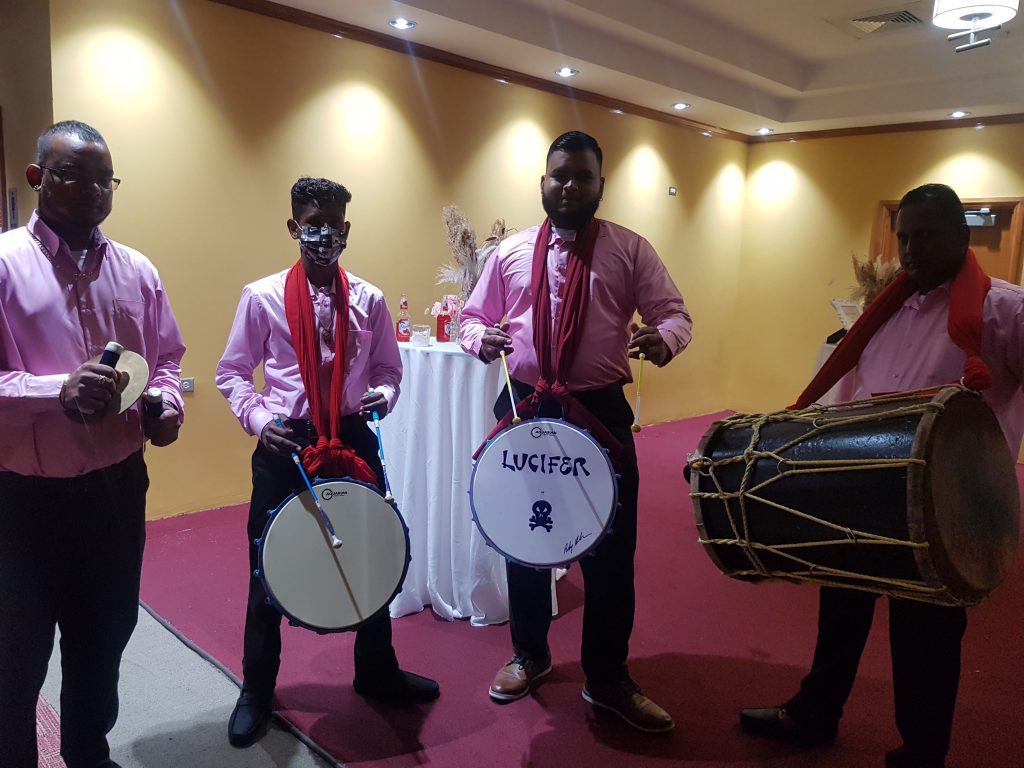While the main purpose of a wedding is to bring two people and families together, it concurrently provides an opportunity for the display of our rich culture in the many rites and rituals, decorations, music, fashion, and cuisines. It also provides a forum for relatives and friends to meet and enjoy an afternoon of fun and amusement and not least, an opportunity for many in the community to earn incomes from the many services provided.
Decoration is a major aspect of Hindu wedding. Not just the bedi area where the rites are performed is decorated but the entire compound in most cases. Decoration is also laid out by professionals who are highly recommended and costly.
The decoration incorporates symbols of Hinduism such as Ganesha, the Hindu deity, decorated deeyas and khalsas which are also prominently displayed to enhance the aesthetics of the settling.
For the past two decades traditional Indian wears have come to dominate fashion in wedding. Not only the bride and bridegroom and immediate family members are dressed in traditional clothing but also the guests. A Hindu wedding is “sundar capra” all the way!
In the past the cost of an Indian suit was prohibitive to most. Thanks to the Indian trade fairs today the average Indian family can afford Indian clothing!
Tassa music, the chutney singers and musicians and the DJ are hired to provide the best entertainment. Over the years all these aspects of our entertainment have been enhanced to give everyone not only a ‘feel good experience’ but the right to take pride in our artistes who have hone their skills and talents to provide us with amazing performances.
Tassa drummers today are well dressed in uniforms. They have taken this aspect of our culture and moved it to a status of national acceptance and respectability. Today the tassa is not only played at Indian weddings but also at national events including graduations, political rallies, and State functions.
Chutney music has also reached the pinnacle of fame in our society. From the early 1970s when Sundar Popo hit the airwaves with Nani and Nana to the pioneering work of the Indian Cultural Pageant and other promotions, chutney has certainly risen. I may not be far off the mark by saying that chutney music is the most rapidly growing music artform in the country and the Caribbean.
The wedding of my nephew Kiran and Nikita at Endeavour last Thursday (16/06/22) provided all aspects and opportunities outlined above. With sunny weather, a saving break from the uninterrupted rainfall over the last week, the pandit led in the chanting of mantras and the many rites that are integral to a Hindu wedding.
A major highlight of the evening was entertainment by Chutney Queen Ramrajie Prabhoo. Not losing her sting, Queen Ramrajie had the crowed on their feet and the dancers on their toes. Also lending their voices to the entertainment was Naresh Prabhoo and Beeshram Sewdat.
The traditional Hindu families don’t sponsor parties but weddings. It has been so for our grandparents and today their descendants continue with this tradition. While it a huge cost to the host, much of the spending is paid to small businesses in the community. This formula ensures that the money spent remains in the community – at least the greater part it.
